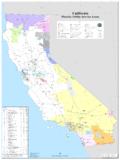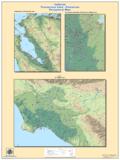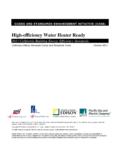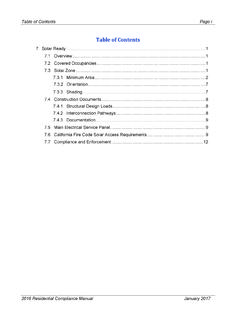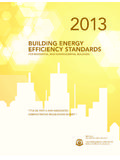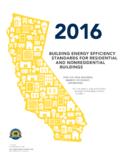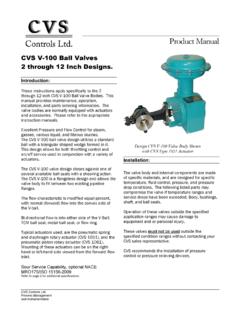Transcription of Tracking Progress - Once-Through Cooling Phase-Out
1 california energy commission Tracking Progress Last updated April 2018 Once-Through Cooling 1 Once-Through Cooling Phase- Out The Clean Water Act requires the Environmental Protection Agency to ensure that the location, design, construction, and capacity of Cooling water intake structures reflect the best technology available for minimizing adverse environmental impacts. Since 1972, states have enforced this requirement on a case-by-case basis in the absence of a specific federal rule. california parties expressed concerns that federal regulations were inadequate and should be addressed by a clearer, more prescriptive california rule. The State Water Resources Control Board (SWRCB) first described a california regulatory approach in March 2008 when it published a scoping document titled Water Quality Control Policy on the Use of Coastal and Estuarine Waters for Power Plant Cooling to implement Section 316(b) of the Clean Water Act, 33 1326(b).
2 The california Independent System Operator ( california ISO), california energy commission ( energy commission ), and california Public Utilities commission (CPUC) worked closely with the SWRCB to develop a policy to achieve water quality goals while ensuring electricity grid reliability. On May 4, 2010, the SWRCB approved a Once-Through - Cooling (OTC) policy that included many grid reliability recommendations made by the california ISO, as well as a joint implementation proposal developed by the energy commission , CPUC, and california ISO. The Office of Administrative Law approved the policy on September 27, 2010, and the policy became an effective regulation on October 1, 2010. The regulation affected 19 california power plants. Of those, 16 power plants totaling about 17,500 megawatts (MW) are in the california ISO balancing authority area, and 3 are in the Los Angeles Department of Water & Power (LADWP) balancing area. The original regulatory compliance dates range from 2010 to 2024.
3 In July 2011, LADWP obtained the SWRCB s consent to delay compliance for its three units until 2029. In return, LADWP agreed to exceed the ocean water best available control technology embodied in the OTC policy by completely eliminating use of ocean water for its repowered facilities. The policy recognizes that some of these plants are critical for system and local reliability. Some may also provide operational services (such as flexible capacity requirements, ramping to follow net load, and regulation) needed to integrate renewable resources. Owners that plan to repower their plants face additional regulatory challenges due to the lack of air credits required for new facilities or major changes to existing facilities in one or more of the air basins. To assure effective communication among the state s energy and environmental agencies concerning the role of these plants in ensuring reliability, the OTC policy created a permanent advisory body the Statewide Advisory Committee on Cooling Water Intake Structures (SACCWIS)1 that is 1 SACCWIS includes seven organizations: california ISO, energy commission , CPUC, california Coastal commission , State Lands commission , california Air Resources Board, and SWRCB.
4 california energy commission Tracking Progress Last updated April 2018 Once-Through Cooling 2 scheduled to report annually to the SWRCB. A principal function of SACCWIS is to provide recommendations to the SWRCB if the member agencies believe a delay in compliance is needed to assure reliability. Recognizing the unique circumstances of the two nuclear power plants in california that were using OTC technologies (now only one), the OTC policy also established a second advisory body the Review Committee for Nuclear Fueled Power Plants (RCNFPP) to refine the cost estimates for the nuclear power plants to satisfy the policy. In 2014, the United States Environmental Protection Agency issued its own OTC regulations, but these do not appear to have substantive requirements for california plants that exceed those regulations already enacted by the SWRCB. Several generating companies contested the SWRCB OTC policy in court, but a settlement was reached between the SWRCB and the current owners of the power plants in fall 2014.
5 In this settlement, the Moss Landing compliance dates were pushed back to December 31, 2020, and the SWRCB agreed to several specific implementation constraints for the Pittsburg, Mandalay, and Ormond Beach facilities. (The Pittsburg and Mandalay power plants have since retired.) OTC Phase-Out Status Tracks The OTC policy determined that closed-cycle evaporative Cooling was the best available technology and established this as a benchmark for two compliance tracks. Track 1: Reduce the intake flow rate at each power-generating unit to a level that can be attained with a closed-cycle evaporative Cooling A minimum of 93 percent reduction is required compared to the design intake flow rate. Track 2: If compliance with Track 1 is not feasible, reduce the impingement mortality and entrainment3 for the facility as a whole to 90 percent of Track 1 reductions, using operational or structural controls, or both. Alternatively, a plant can comply by shutting down.
6 2 Closed-cycle evaporative Cooling system refers to a Cooling system that transfers waste heat to the surrounding air through the evaporation of water, thus enabling the reuse of a smaller amount of water several times to achieve the desired Cooling effect. The only discharge of wastewater is from periodic blowdown to limit the buildup of materials in excess of desirable limits by best engineering practice. 3 Most power plants that obtain Cooling water from surface water sources use some method of primary screening to prevent large objects from being drawn through the Cooling system, where they may clog or damage sensitive equipment. These screens typically have mesh panels with slot sizes ranging from 3/8 inch to 1 inch and are rotated periodically or removed to clean any debris, including aquatic organisms. Impingement occurs when organisms are trapped against the screen as a result of the force of the intake water and are unable to escape.
7 Entrainment is the action of drawing smaller objects through the entire Cooling water system, including the pumps and condenser tubes, and discharging them along with the Cooling water and other plant wastes. california energy commission Tracking Progress Last updated April 2018 Once-Through Cooling 3 Recent Power Production Patterns of OTC Facilities It is commonly understood that the OTC plants have, over decades, changed power production patterns from base load units to load-following or peaking units, but the reality is more nuanced. Tables 1 and 2 provide annual capacity factors for the natural gas-fired OTC plants still in service in the california ISO and LADWP balancing authority areas, respectively, for 2014, 2015, 2016, and 2017. Unit -specific and cumulative (total amount for all units added together) capacity and capacity factors are provided. Table 1: Annual Capacity Factors for Natural Gas OTC Units in the california ISO Balancing Authority Area, 2014 to 2017 Units SWRCB Compliance Date Unit Capacity ANNUAL CAPACITY FACTORS 2014 2015 2016 2017 Alamitos Unit 1 12/31/2020 175 Alamitos Unit 2 12/31/2020 175 Alamitos Unit 3 12/31/2020 326 Alamitos Unit 4 12/31/2020 324 Alamitos Unit 5 12/31/2020 485 Alamitos Unit 6 12/31/2020 485 Alamitos Units 1-6 12/31/2020 1.
8 970 Encina Unit 1 12/31/2017 107 Retired 4/18/17 Encina Unit 2 12/31/2017 104 Encina Unit 3 12/31/2017 110 Encina Unit 4 12/31/2017 300 Encina Unit 5 12/31/2017 330 Encina Units 1-5 12/31/2017 951 Huntington Beach Unit 1 12/31/2020 215 Huntington Beach Unit 2 12/31/2020 215 Huntington Beach Units 1-2 12/31/2020 430 Moss Landing Unit 1 12/31/2020 540 Moss Landing Unit 2 12/31/2020 540 Moss Landing Units 1, 2 12/31/2020 2,484 Ormond Beach Unit 1 12/31/2020 806 Ormond Beach Unit 2 12/31/2020 806 Ormond Beach Units 1-2 12/31/2020 1,612 california energy commission Tracking Progress Last updated April 2018 Once-Through Cooling 4 Units SWRCB Compliance Date Unit Capacity ANNUAL CAPACITY FACTORS 2014 2015 2016 2017 Redondo Beach Unit 5 12/31/2020 179 Redondo Beach Unit 6 12/31/2020 175 Redondo Beach Unit 7 12/31/2020 505 Redondo Beach Unit 8 12/31/2020 496 Redondo Beach Units 5-8 12/31/2020 1,355 Source: california energy commission staff Table 2.
9 Annual Capacity Factors for Natural Gas OTC Units in the LADWP Balancing Authority Area, 2014 to 2017 Units SWRCB Compliance Date Unit Capacity ANNUAL CAPACITY FACTORS 2014 2015 2016 2017 Harbor 5 12/31/2029 75 Haynes Unit 1 12/31/2029 230 Haynes Unit 2 12/31/2029 230 Haynes Unit 8 12/31/2029 264 Haynes Units 1, 2, 8 12/31/2029 724 Scattergood Unit 1 12/31/2024 163 Scattergood Unit 2 12/31/2024 163 Scattergood Units 1-2 12/31/2024 326 Source: california energy commission staff Although the annual capacity factors shown in Tables 1 and 2 suggest relatively little use for most of these OTC facilities across the year, many of them operate at full capacity at some point in many months of these years. For example, Ormond Beach Unit 1 and Unit 2 ran at its full capacity only on peak days during the summer months May through October 2017. This reflects the usage of these plants as part of a complex system that the two balancing authorities manage to best serve the requirements of the overall grid within each area.
10 Status of OTC Facility Compliance Below is a review of the compliance dates for each power plant, as reflected in the adopted policy or formally approved amendments, as well as information about compliance proposals from generator owners. Within the policy itself, generator owners have options for compliance and can petition the SWRCB for changes in compliance dates. Also provided below is information about the recommendations SACCWIS made to the SWRCB for compliance date changes needed to assure electric system reliability. california energy commission Tracking Progress Last updated April 2018 Once-Through Cooling 5 Facility Owner Plans The owners of each facility were required to submit an implementation plan by April 1, 2011. In these plans, the owners indicated whether they proposed to follow Track 1 or Track 2, or shut down the plant. SWRCB staff, with assistance from the technical staff of the SACCWIS agencies, submitted letters seeking clarifications of the original implementation plans and, in some cases, sought further clarification as new issues surfaced.

